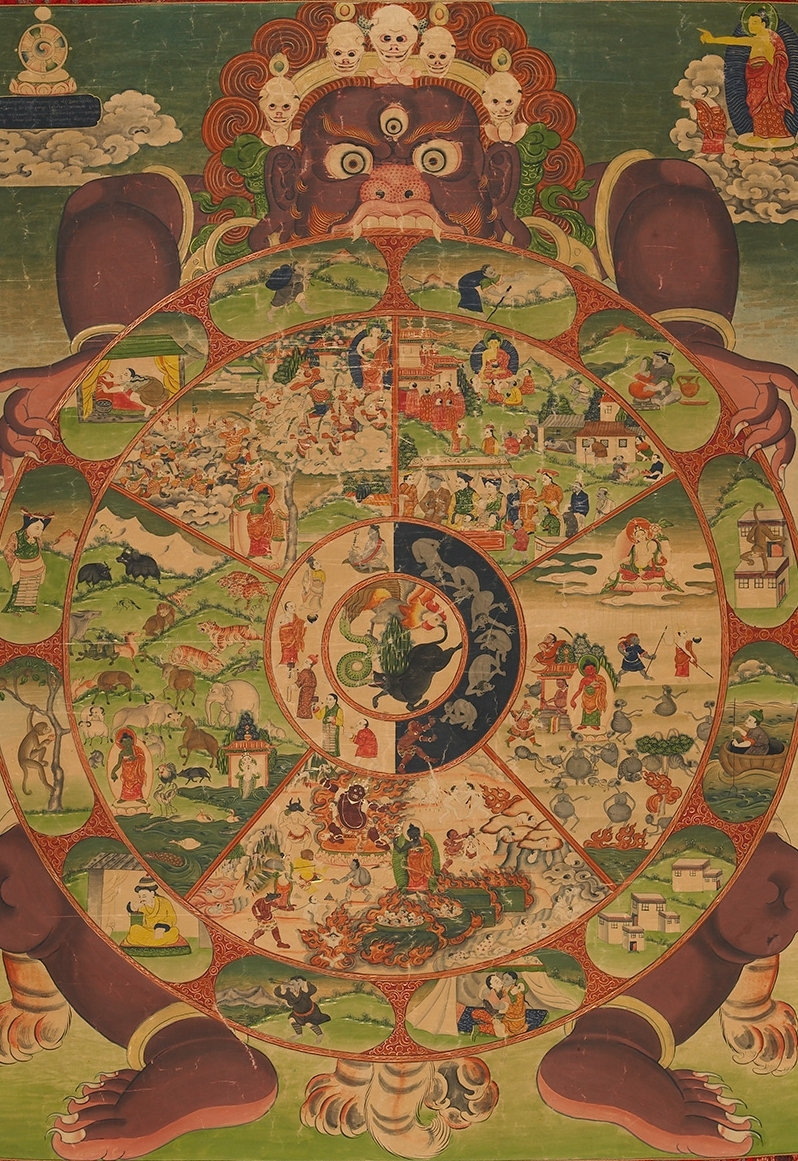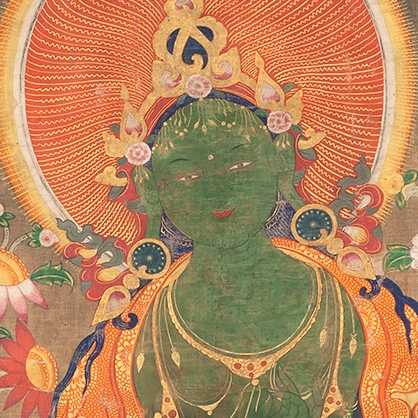
The Wheel of Existence is a ubiquitous visual teaching tool in the Buddhist world that explains the cyclical process of life, death, and rebirth (samsara). It is directed at a general public and can be found painted at the entrance of nearly every temple and monastery. Its scenes are pictorial expressions of the laws of karmic cause and effect, that our own actions—both virtuous and wicked—bring about reward and retribution and will determine our fate in the next life.
At the center of the wheel are symbolic representations of the three origins of suffering: ignorance (embodied by a pig), attachment (a rooster), and anger (a snake). These “poisons” are said to be the cause of the endless cycle of suffering that is birth, death, and, rebirth into the various realms of existence, which are depicted in the large segments of the wheel that surround the two inner circles. These realms include those of the gods and demi-gods (top left), humans (top right), animals (bottom left), hungry ghosts (bottom right), and hells (bottom). Interestingly, in the human realm there is a depiction of a Westerner in what appears to be khaki field clothing and a pith helmet.
65 3/8 x 39 3/4 in.
C2004.21.1, HAR65356
- https://dev.rubinmuseum.org/images/content/736/c2004.21.1har65356__zoom.jpg
- https://dev.rubinmuseum.org/images/content/736/c2004.21.1har65356-(with-brocade)__zoom.jpg
- https://dev.rubinmuseum.org/images/content/736/c2004.21.1har65356__zoom.jpg
- https://dev.rubinmuseum.org/images/content/736/c2004.21.1har65356-(with-brocade)__zoom.jpg


__slider.jpg)

